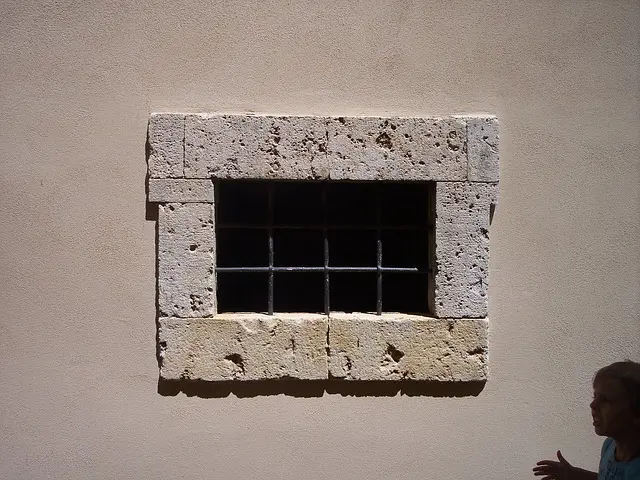Kratom Louisiana has become a notable aspect of the state's diverse botanical offerings, thanks to its favorable subtropical climate similar to its native Malaysia. The high-quality Mitragyna speciosa leaves, known locally as 'kratom louisiana,' are celebrated for their unique alkaloid profile and effects, attracting a dedicated user base. The local market emphasizes Malaysian strains, valued for their consistent quality and potency. In Louisiana, the use of kratom is gaining traction as a wellness alternative, with consumers appreciating its stimulating and euphoric properties. Regulation in Louisiana classifies kratom as a Schedule I controlled substance, aligning with federal regulations, which influences its legal management within the state. Users must navigate this complex legal landscape by staying informed on local laws and sourcing from compliant vendors. Kratom's reported benefits for pain relief, mood enhancement, and opioid withdrawal management have sparked a community of users who are actively involved in policy discussions to ensure both the recognition of its potential advantages and the protection of public health. The ongoing dialogue underscores the importance of finding a balanced approach to kratom regulation in Louisiana, ensuring accessibility with clear legal guidelines. This dynamic situation reflects the significant impact that user experiences and advocacy can have on the future use of kratom in the state.
Discover the emergence of Malaysian Kratom Buds as a botanical sensation in Louisiana’s vibrant plant life. This article delves into their potency, exploring how these exotic plants are cultivated and harvested to become a staple in Louisiana markets. We’ll navigate the legal nuances surrounding kratom louisiana, shedding light on consumer patterns and experiences within the state’s regulatory framework. Join us as we uncover the intriguing journey of Malaysian Kratom Buds from foreign soil to local shelves, and what it means for enthusiasts in Louisiana.
- Unveiling the Potency of Malaysian Kratom Buds in Louisiana's Botanical Scene
- Harvesting and Cultivation: The Journey from Malaysian Soil to Louisiana Markets
- Legal Landscapes and Consumption Patterns: Understanding Kratom Louiziana's Regulatory Framework and User Experiences
Unveiling the Potency of Malaysian Kratom Buds in Louisiana's Botanical Scene

Kratom, a botanical extract derived from the leaves of Mitragyna speciosa, has garnered attention in Louisiana’s diverse botanical scene. Within this vibrant landscape, Malaysian Kratom buds stand out for their exceptional potency and unique alkaloid profile. These buds, recognized locally as ‘kratom louisiana’, are sought after by enthusiasts who appreciate the nuanced effects they offer. The climate of Louisiana’s humid subtropical region provides an environment conducive to the cultivation of Kratom, mirroring the conditions found in its native Malaysia. This has led to a burgeoning market for high-quality Kratom buds, with Malaysian strains being particularly favored due to their potent and consistent effects. Users in Louisiana praise the euphoric and energizing properties of these buds, which are distinct from other varieties available on the market. The cultivation and distribution of Kratom louisiana are closely monitored by state regulations, ensuring that only pure and safe products reach consumers. As a result, Malaysian Kratom buds have carved out a significant niche within Louisiana’s botanical offerings, offering an alternative wellness option for those interested in exploring the natural benefits of this plant.
Harvesting and Cultivation: The Journey from Malaysian Soil to Louisiana Markets

In the lush, tropical regions of Malaysia, the journey of kratom begins with meticulous cultivation and careful harvesting. The fertile soil of Malaysia’s rainforests provides an ideal environment for the growth of kratom trees, which are nurtured under the canopy of ancient forests where they receive optimal sunlight and moisture. Local farmers employ sustainable agricultural practices to ensure the health of the land and the quality of the kratom buds. These practices include selective pruning, organic pest control, and minimal use of chemical fertilizers to preserve the natural integrity of the plant. Once mature, the kratom leaves are hand-picked at their peak potency, a process that respects both the plant’s alkaloid profile and the environmental balance.
The harvested kratom buds undergo a rigorous drying process to preserve their active compounds before making their way to the vibrant markets of Louisiana. The kratom louisiana trade is facilitated by reputable vendors who ensure that each batch meets stringent quality standards. These vendors take great care in transporting the kratom from Malaysia to Louisiana, safeguarding it against environmental stressors during transit. Upon arrival, the kratom buds are carefully processed and packaged, ready to be distributed through various outlets across the state. In Louisiana, enthusiasts can find these authentic Malaysian kratom products, which are celebrated for their high efficacy and purity, a testament to the care taken from soil to sale.
Legal Landscapes and Consumption Patterns: Understanding Kratom Louiziana's Regulatory Framework and User Experiences

In Louisiana, the regulatory framework surrounding the consumption of Kratom is a mosaic of local and state laws that continuously evolve. As of recent updates, Kratom remains a gray area within the state, with some municipalities enacting ordinances that regulate or restrict its sale and use. The Louisiana Board of Pharmacy has taken a stance on Kratom by classifying it as a Schedule I controlled substance, aligning with the federal government’s position, which categorizes it under the DEA’s Drug Enforcement Regulations. This classification affects how Kratom is legally treated and sold within the state’s boundaries. Users in Louisiana navigate this complex legal landscape by staying informed about local legislation and seeking Kratom products from reputable sources that adhere to these regulations. User experiences with Kratom in Louisiana are diverse, reflecting a range of perceptions and uses. Reports from consumers indicate a variety of reasons for its use, including pain management, mood enhancement, and as an aid for withdrawal symptoms from opioids. Despite the legal ambiguity, a community of users has developed, sharing insights and advocating for sensible regulations that recognize Kratom’s potential benefits while ensuring public health and safety. This community often engages in dialogue with policymakers to influence legislative decisions, aiming to balance accessibility and responsible use with the need for clear legal guidelines. The ongoing discourse in Louisiana about Kratom underscores the importance of a nuanced understanding of both its potential effects and the regulatory environment it operates within. Users’ experiences and advocacy play a pivotal role in shaping this landscape, contributing to an evolving narrative on the future of Kratom use within the state.
Malaysian Kratom Buds have carving a distinctive niche within Louisiana’s botanical offerings. Their potency and unique properties have garnered significant attention among consumers seeking natural alternatives for well-being. The meticulous cultivation process from the rich soils of Malaysia to the vibrant markets of Louisiana ensures a consistent supply of high-quality Kratom, catering to an ever-growing demand. As evidenced by the regulatory framework in place, Kratom’s status in Louisiana necessitates careful consideration and responsible use. The diverse experiences of users across the state highlight the need for continued research and education on the subject. With a keen eye on the legal implications and usage patterns, Kratom Louisiana continues to be a testament to the intersection of traditional practices and modern botanical interests.






